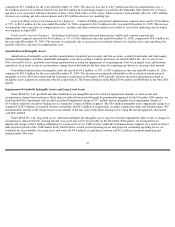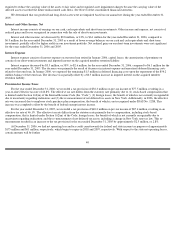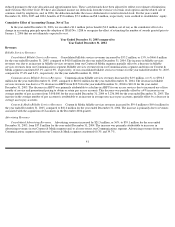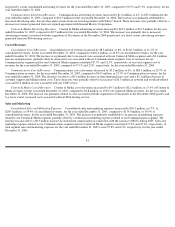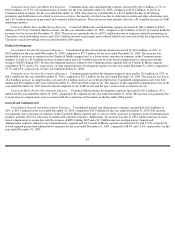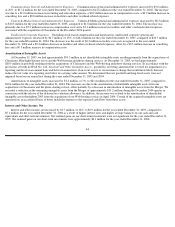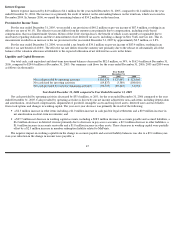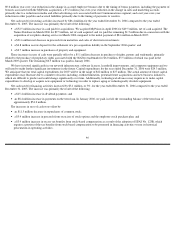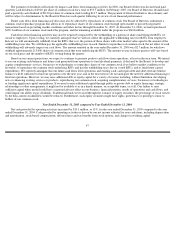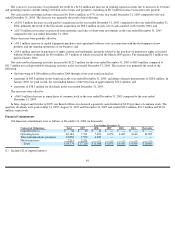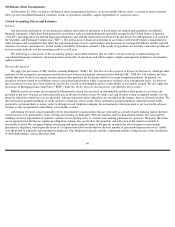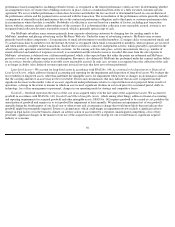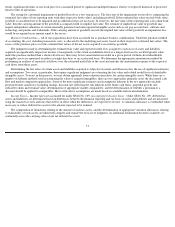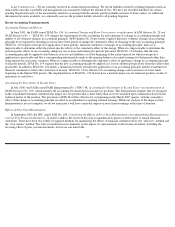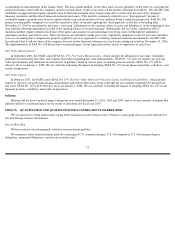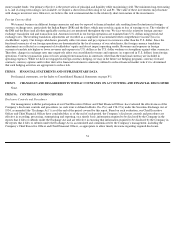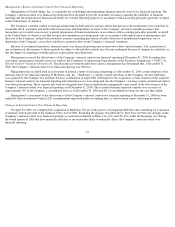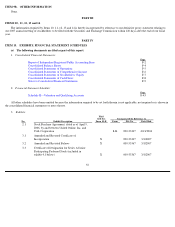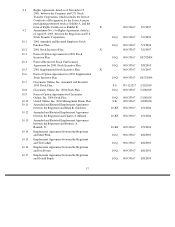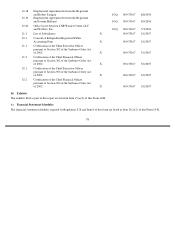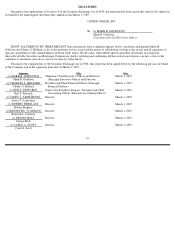Classmates.com 2006 Annual Report Download - page 50
Download and view the complete annual report
Please find page 50 of the 2006 Classmates.com annual report below. You can navigate through the pages in the report by either clicking on the pages listed below, or by using the keyword search tool below to find specific information within the annual report.
Off
-
Balance Sheet Arrangements
At December 31, 2006, we had no off-balance sheet arrangements that have, or are reasonably likely to have, a current or future material
effect on our consolidated financial condition, results of operations, liquidity, capital expenditures or capital resources.
Critical Accounting Policies and Estimates
General
Our discussion and analysis of our financial condition and results of operations is based upon our audited and unaudited consolidated
financial statements, which have been prepared in accordance with accounting principles generally accepted in the United States of America
(“GAAP”) including those for interim financial information and with the instructions for Form 10-K and Article 10 of Regulation S-X issued by
the Securities and Exchange Commission (“SEC”). The preparation of financial statements in accordance with GAAP requires management to
make estimates and assumptions that affect the reported amounts of assets and liabilities and disclosure of contingent liabilities and the reported
amounts of revenues and expenses. Actual results could differ from those estimates. The results of operations for interim or transition periods are
not necessarily indicative of the operating results for a full year.
The following is a discussion of the accounting policies and related estimates that we believe are most critical to understanding our
consolidated financial statements, financial position and results of operations and which require complex management judgments, uncertainties
and/or estimates.
Revenue Recognition
We apply the provisions of SEC Staff Accounting Bulletin (“SAB”) No. 104, Revenue Recognition in Financial Statements,
which provides
guidance on the recognition, presentation and disclosure of revenue in financial statements filed with the SEC. SAB No. 104 outlines the basic
criteria that must be met to recognize revenue and provides guidance for disclosure related to revenue recognition policies. In general, we
recognize revenue related to our billable services and advertising products when (i) persuasive evidence of an arrangement exists, (ii) delivery
has occurred or services have been rendered, (iii) the fee is fixed or determinable and (iv) collectibility is reasonably assured. We also apply the
provisions of Emerging Issues Task Force (“EITF”) Issue No. 00-21, Revenue Arrangements with Multiple Deliverables .
Billable services revenues are recognized in the period in which fees are fixed or determinable and the related products or services are
provided to the user. Our pay accounts generally pay in advance for their service by credit card, and revenue is then recognized ratably over the
period in which the related services are provided. Advance payments from subscribers are recorded on the balance sheet as deferred revenue. We
offer alternative payment methods to credit cards for certain pay service plans. These alternative payment methods currently include ACH,
payment by personal check or money order or through a local telephone company. In circumstances where payment is not received in advance,
revenue is only recognized if collectibility is reasonably assured.
Advertising revenues consist primarily of fees from Internet search partners that are generated as a result of users utilizing partner Internet
search services, fees generated by users viewing and clicking on third-party Web site banners and text-link advertisements, fees generated by
enabling customer registrations for partners and fees from referring users to, or from users making purchases on, sponsors’ Web sites. Revenues
are recognized provided that no significant obligations remain, fees are fixed or determinable, and collection of the related receivable is
reasonably assured. We recognize banner advertising and sponsorship revenues in the periods in which the advertisement or sponsorship
placement is displayed, based upon the lesser of (i) impressions delivered divided by the total number of guaranteed impressions or (ii) ratably
over the period in which the advertisement is displayed. Our obligations typically include a minimum number of impressions or the satisfaction
of other performance criteria. Revenue from
49


